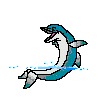
 TOUCH
THE SEA® TOUCH
THE SEA®
Keeping in Touch |
 |
How divers can remove fishing line
Other things divers can do for the sea
How we can help the oceans when we're not in them
ABOUT
UNDERWATER TRASH
As
you know, I've been spending lots of time
with underwater debris, even before Touch
the Sea began the Bonaire Harbour Healing
Project almost a decade ago. On practically
every dive beneath Bonaire's Old Pier, I
bring up a Pocket Cleaner Station bag filled
with the usual fishing line, plastic bottles,
fishing line, rags, fishing line, food and
condensed milk cans, fishing line, bottles
and jars, and fishing line. One thing became
clear as I wrote this list:
#1
The debris is remarkably consistent:
|
 |
|
Rope damage to coral
head
|
#2 Why not get people to stop trashing the waters, rather than picking up the same trash over and over? (Duh.) It's mostly the same people who are dropping trash into the waters around the Pier, so they're not difficult to find. We've got to educate them to use the trash receptacles Selibon has already placed on and near the Pier.
Several years ago, I figured out that education could solve the problem of underwater batteries. I wrote a flyer about the dangers of batteries to marine life, my friend Annette Roswell translated it into Spanish, the Bonaire Marine Park printed it, and the Marine Park, the Customs Officers and the Harbourmaster's Office all cooperated in distributing it. The numbers of batteries beneath the Pier dropped drastically and stayed low for years, and then last summer began to rise again. I contacted the Marine Park, and Ranger Edwin Domacasse (Din) has been talking to the boaters and fishermen at the Pier, and the Bonaire Fishermen's Association. I've only found a single battery this year!
So now educating the crews and residents of the vessels which regularly dock at the Pier, about trash disposal, has begun. Din includes the issue when he speaks to boaters, fishers, and folks on the Pier. Selibon (the island sanitation company) and the Harbourmaster's Office support these efforts. My primary contribution (Is there a nicer term for squeaky wheel or gadfly?) has been to send e-mail messages whenever I find anything particularly noteworthy under the Pier, to those three organizations: the BMP, Selibon, and the Harbourmaster.
Thanks to Ikelite, I can now e-mail photo documentation along with my messages. Ikelite loaned me a housing for our digital camera, free of charge, since I would be using the system to help marine critters.
The
housed system is also responsible for the
photos you see on this website.
 |
FISHING
LINE
No,
I haven't forgotten all that fishing line.
Most of the line under the Pier has been
broken because it was entangled. The fisher
can't prevent that; the best solution in
these cases is for divers to remove the
line.
-
For your safety: Always carry a cutting instrument - knife or shears - if you intend to do anything with fishing line. Even very thin fishing line is much stronger than it appears and can rarely be broken by hand.
-
For your safety: Until you feel extremely comfortable removing fishing line, take only new line with no growth on it. It may be less entangled than overgrown lines, having been down for less time. Also, it has no growth, such as fire coral or stinging hydroids, that might sting your hands.
-
Cut the line or find an end.
-
Coil the line around your hand.
-
For the safety of the reef: If there's any tension at all on the line, it's entangled. To avoid knocking over a coral head or slicing a sponge, swim along the line as you coil rather than pulling on it.
-
For the safety of the reef: When the line goes under or through something, cut it, secure the coil (see next step), and, if you wish, begin a new coil on the other side.
-
For your safety: secure the line. Wrap an end of the line around the coil, tie the coil into a knot, somehow stop it from unraveling. That will help prevent you from becoming entangled in your good deeds!
-
I carry the coils in my BC pocket or a Pocket Cleaner Station.
-
After the dive, dispose of the line properly. Some fishing supply places in the US accept line for recycling. Unless you're going to carry the line back to the US, though, in the islands proper disposal is usually into a trash can.
-
To minimize trash, separate the things that can be reused: hooks, leaders, intact coils of line, dropped knives, etc. Make them available for reuse if you can. On Bonaire we try to get them to Din Domacasse, our Bonaire National Marine Park Chief Ranger, who distributes them to needy fishers.
TANGLES are the only form of fishing line we find underwater that are within the control of the fishers. The fishers are being educated and requested to dispose of tangles in trash cans.
| Fishing
Line People fishing have no interest in hooking humans in the water, but there's nothing they can do to stop us if we blunder into their lines. And when we blunder into their lines their reaction is to set the hook. So anytime we're in the water we need to be aware of fishing activity for our own safety. There's a second consequence of fishing that concerns divers: fishing line. The hook is baited, the line is cast; underwater nibblers keep it company until it lands on the bottom. The fisher reels it in - and the hook catches on the bottom. The fisher tries to free it, fails, and cuts the line. The line sinks to the bottom. It may rest directly on living coral, injuring the polyps it contacts. It may entangle a marine animal. I found a sharptail eel who had become ensnared in fishing line and spun its body. The result of the spin was that the eel strangled itself. It had not been hooked; just swimming into the line and having the wrong instincts for the situation had resulted in its death. Sponge crabs, the ones who carry a single piece of sponge like an umbrella, also have the wrong instincts for dealing with fishing line. On four occasions I've freed sponge crabs who had become so thoroughly entangled in fishing line that they couldn't move at all. Without a diver's interference, the future for these animals was slow death by starvation. So take a little time on your dives to remove fishing line, especially new fishing line. Be careful not to get caught by hooks on the line! If there are hooks, leaders, or weights on the line you collect, try to make them available for reuse. I
found one of the entangled sponge
crabs, not by noticing the crab, but
because the line I was coiling turned
out to be the same line the crab was
tangled in. If there are any more
critters entangled down there, let's
hope that the lines they're tangled
in are the ones we're able to remove! |
 |
|
Anemone
|
As divers we love the sea and all the animals within it. We practice good buoyancy control because we respect reefs and wish to protect them. We willingly dedicate some of our dives to removing debris that people created and allowed to end up underwater. Without question, the actions of divers have had and will continue to have a beneficial effect on marine creatures.
Unfortunately, threats to the world's oceans (and other bodies of water) are on a much greater scale than divers can deal with underwater. The threats include -- but aren't limited to -- pollution and overfishing, but the biggest threat to the oceans is people's ignorance about them. If people don't know how wonderful the underwater world is, why should they waste money, effort, or time protecting it? So do something on land, as well as doing things underwater, to help the oceans.
HOW
WE CAN HELP THE OCEANS WHEN WE'RE NOT IN
THEM
| We Learn from Your Experiences |
| If you've spoken to groups about the oceans and their residents, let us know your experiences so we can learn from them. Write to (link to us here?) and let us know: |
| •
who you spoke to; if it was children,
what was their age group • how you arranged it? • how long your presentation(s) was • did you use: slides, video, live animals, dive gear, games? •did you answer questions? What were the most common ones? • what would you have done differently, and why? |
On a very personal scale, every non-diver we interest in our underwater experiences is someone who's more likely to vote in favor of the oceans (so to speak) next election. Bear in mind that warm and fuzzy experiences achieve this result much better than near-death experiences.
Have you thought about talking to school groups? Residents at old-age homes? Summer camps? If you're worried about what to say, the Coral Reef Alliance has a slide show prepared for presentation by interested folks. Find it at their website, www.coralreefalliance.org.
In addition to giving presentations about
the underwater world, divers and non-divers
can:
-
write letters to lawmakers urging them to support legislation that's beneficial to the environment. Learn who your lawmakers are, and how to contact them, by checking (I'm still checking for the site that gives this info)
-
write letters to businesses and organizations praising their good treatment of the oceans
-
write letters to businesses and organizations censuring their poor treatment of the oceans
On a less personal scale, you can support organizations that support the oceans. Here are a few (if you're a supporter of others, let us know about them)
Bonaire
Marine Park
Center
for Marine Conservation
Caribbean
Conservation Corps
CORAL
(the Coral Reef Alliance) dedicated to keeping
coral reefs alive around the world.
Mote Marine
Lab
REEF (the
Reef Environmental Education foundation)
I'm certainly not the first person who's realized that people protect what they love, or that when divers share their love of the sea they can create more protectors. It's in the methods for how to spread the word that we falter. I've made a few suggestions. What are yours? E-mail them to dee@touchthesea.com, and we'll add them to the website. The more ideas we have the more likely it is that we'll have one or more activities each person feels comfortable doing.
The
US Government tells us what it's doing about
Coral Reef Protection at www.epa.gov/owow/oceans/coral/.
 |

Naked Camera Event
|